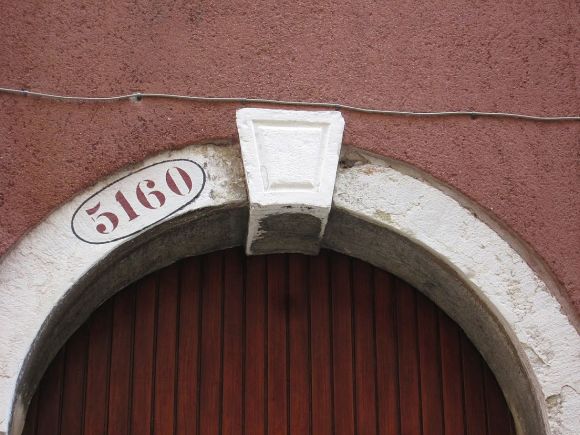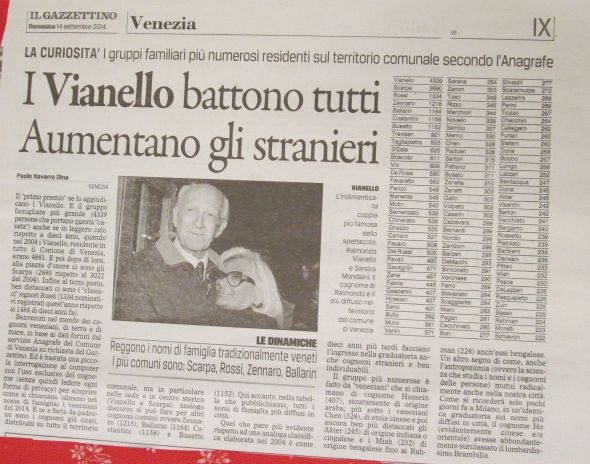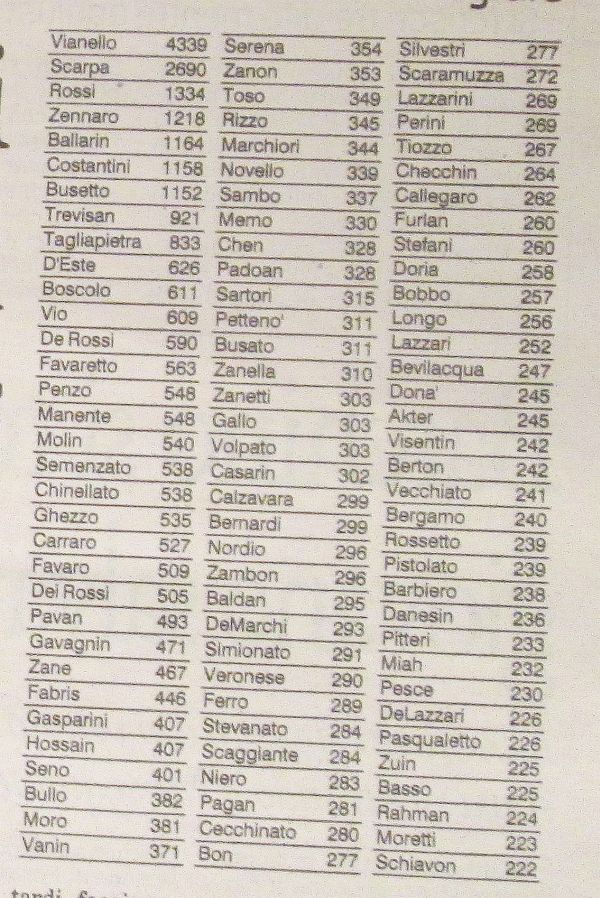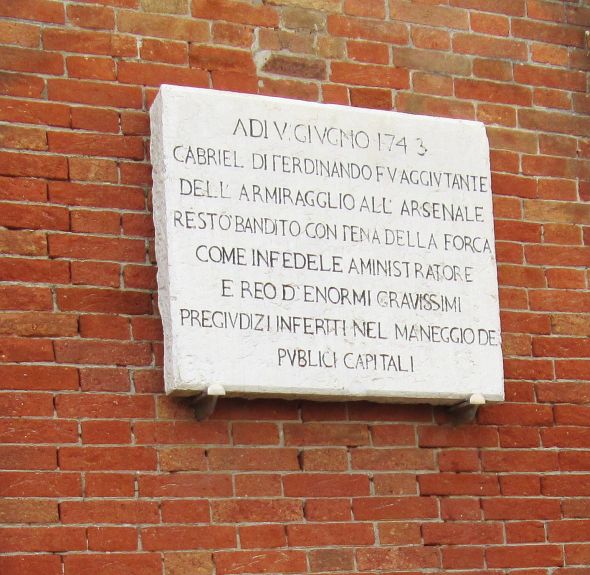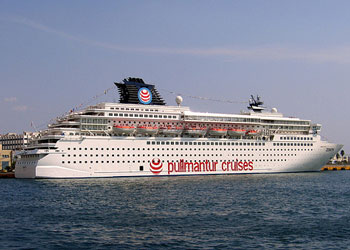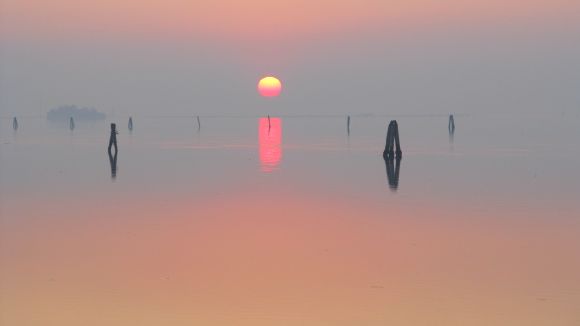
What everybody loves about Venice (among many things) is how old it is. And that is indeed a thing to love. I imagine all those amazing designers and builders and artists working away centuries ago, believing that their handiwork would last for, oh, maybe ever. And because they were first-rate craftsmen, it turns out that most of them were right.
You might say that MOSE is also going to last forever, but not in a good way. I don’t write updates on the continuing calamity that is the world’s most preposterous project because I’m bored by the mendacity, magnitude and monotony of the problems. Everything has gone, is going, and will be going, wrong with this thing until Jesus comes back, so updates are pointless. In fact, I’ve begun to suspect that the whole thing started with a bunch of drunk people sitting around one summer afternoon on some rich person’s yacht or private mountain, who decided to break the boredom by inventing a game in which the winner is the one who finds a way to waste the most money on the most pointless enterprise in the history of the world. If you can call it “winning.” Bonus points for environmental damage, or if somebody dies.
But the latest headlines have barged into my brain and made me think about it again, if only briefly, and my thoughts are not lovely. I can sum it up for you: Yet more things have been discovered to be screwed up, and fixing them will cost lots more money. This has become the refrain of the Marching Song of the MOSE Squadron, while the bass singers set the jaunty rhythm “Money for me, money for me, money for me…..” And as you read, consider (as I have) that if I had done the calculations, it’s obvious they would have come out all wrong. But I am not a civil engineer (I’m hardly civil at all) and I do not have a piece of paper from some institute which implies that I have studied how to do this work. But we must face the fact that the perpetrators of all this have such certificates.
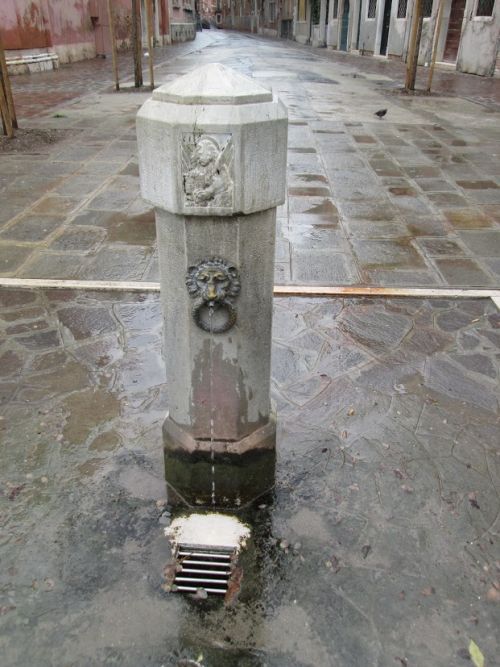
Here’s the headline on September
MOSE, the gate of the lock at Malamocco has to be redone.
I will translate the main points in this and the following article:
The gate on the lock basin (“conca“) at Malamocco has to be redone. After the 400 million euros already spent, another 20 million will have to be invested for the “lunata,” the semi-circular breakwater shaped like the moon which protects the ships from waves and current as they position themselves to enter or as they exit.
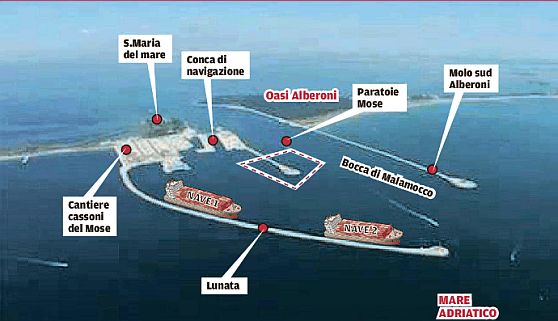
The lock, you may recall, was dug to permit the passage of ships between the Adriatic and the lagoon whenever the floodgates are raised. But evidently every good idea contains the seeds of its own destruction, if you play it right. It was constructed in 2007 by the Consorzio Venezia Nuova (by means of the mega-company Mantovani) and designed by Technital ten years ago, which Vitucci recalls as “the golden age of MOSE, when money poured in without limits and without too much control.” But even then the design was clearly flawed, for which almost everybody involved is now paying the consequences.
Inadequate. Even though the breakwater extends 1300 meters (4,265 feet), its basin is too small for the latest generation of container ships, making it too risky for the big ships to attempt to enter the lock. Other than that, the “mobile” parts of the lock — the gates — cannot function because the water exerts too much pressure. The persons making those calculations might have been interrupted by a phone call, or the arrival of a pizza; anyway, it doesn’t work. This problem was discovered in 2015 when the gate gave way in the first storm. Urgent interventions are now in the hands of a Belgian company.
But not to worry! The president of the Magistrato alle Acque, Roberto Linetti, says that fixing it will only cost 18 million euros because the foundations are still good. And meanwhile, they’ll be able to add a few meters to allow the ships to pass. So you see? In the end, it was a good thing the gate didn’t work.
Infinite. Or “unfinished.” Or “unfinishable,” perhaps. What now bears the tired title of the “MOSE scandal” consists, as Vitucci lists it, of: “Bribes and consultants, off-the-books payments and always-positive evaluations rendered by friendly experts, extra costs due to the lack of competition and the necessity of accumulating “black” (untraceable) funds to pay the bribes. But also there have been obvious errors, such as the lock. What was intended to be a structure to prevent penalizing the port activity when the floodgates were up has been shown to be, at the end, the umpteenth useless big project.
Waste. The lock is far from being the only problem — there are the collateral “major works” connected to MOSE, each one of which is its own little one-act tragedy. The “jack-up,” the large “ship” which cost 50 million euros for transporting and moving the gates constructed by Comar and Mantovani, remains anchored at the Arsenal and has never been used because it doesn’t function, despite the repairs that have been made. There is also the damage to the seawall at San Nicolo’ on the Lido, which collapsed a few days after it had been tested. Tens of millions of euros thrown into the sea, as Vitucci (and probably many others) puts it. Damages will need to be paid for all those, too, but it’s not clear by whom.
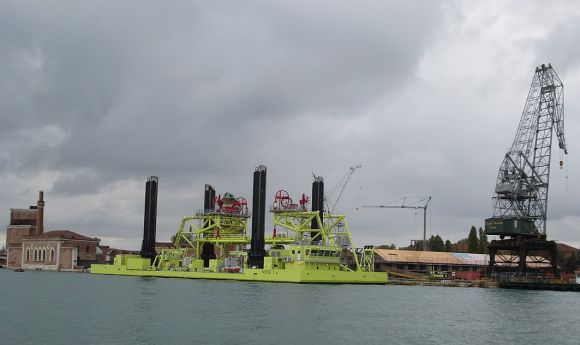
But wait! There’s more! Is anyone wondering how the various components are managing to resist encrustation and mold? I can tell you! But before I do, pause to marvel at the astonishing presence of salt in seawater, not to mention algae and all sorts of cretures which insist on attaching themselves to things. Who could possibly have known, or even guessed at random, that the Adriatic contains salt and water?
The headline in the Nuova Venezia on September 7, 2017, on a story written by Alberto Vitucci:
Mold and degradation, the MOSE gates are already blocked.
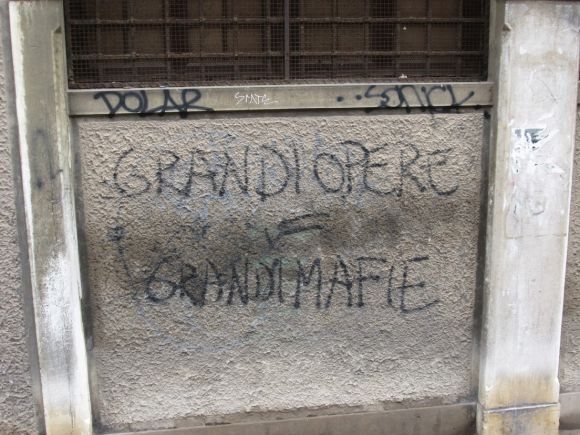
“The encrustation is increasing; the paint is already old. And without electricity it’s impossible to raise the barriers. Mold and degradation in the corridors of the caissons beneath the lagoon. And the gates, exposed for six months to the weather and salt at Santa Marina del Mare, have to be repainted.
The installations. The latest problem is the delay in building the electric plant to raise the gates. MOSE needs energy to raise the gates because it doesn’t exploit the natural energy of the sea and waves. … Unlike the sequence of events at San Nicolo’, where the power plant was installed first, at Malamocco it was decided to position the gates on the lagoon bottom before the power plant was built. Result: For several months the gates have lain on the bottom but it’s impossible to test raising them.
Corrosion and fouling. The first inspections revealed corrosion and encrustation. The lack of electricity has prevented the correct ventilation underwater where the cables and systems pass, not to mention the workers. The walls are covered with a layer of mold 5 centimeters (2 inches) deep. MOSE is a system conceived to remain underwater, and without maintenance, the problems multiply, such as the corrosion of the hinges (of the gates) that was reported several months ago. What to do? The Consorzio Venezia Nuova announced a competition for bids on the construction of the systems. Two groups won, the Abb Comes of Taranto and the Abb Idf of Brindisi. But the proposal to realize some temporary systems to move the gates wasn’t approved. It would have cost 14 million euros, so just let the gates sit underwater, blossoming.
Several months ago, the gates underwater at Treporti began to show accumulations of barnacles, mussels, and crabs — sea-dwelling creatures which were not exactly unknown before the work started.
The paint is peeling. Because there is no electricity or apparatus to install them, the 30 gates that were supposed to be lowered into the water have been waiting for months on the construction site of the caissons. The delay is due to the non-functioning of the “jack-up.” (Some gates were constructed in Croatia and brought across the Adriatic from Split.) During these months, the workers have battled the weather and the seagulls, which have begun to nest in the gates, as follows…..
MOSE: Even the seagulls are stripping the paint.
Information from the article by Alberto Vitucci, La Nuova Venezia, 29 April 2017
It turns out that the beached (so to speak) gates sitting at the construction site are a very attractive home for nesting seagulls, sort of like LeFrak City for waterfowl. But their guano is damaging the paint, and eventually corrodes the metal too. The birds stab at the peeling paint with their beaks, trying to strip it off (boredom? sport? snacks?). Protective tarpaulins have been spread over the gates, but large spaces have been left open for work on the hinges, so ….
Bring on the scarecrows! (I mean gulls): Deafening recordings of frightening sounds. They tried an amped-up donkey braying because an ethologist said that birds are afraid of it. Birds, sure, but not gulls, who fear almost nothing anymore. Next, a high-volume dog growling. Nope. In the end, the only thing that works is a cannon firing blanks, so cannonfire is now periodically heard in the lagoon, followed by the wild flapping of hundreds and hundreds of wings of birds that soon return.
How long will all this be going on?
The timetable. According to the latest schedule — after deadlines passed from 2011 to 2014, then 2017, then 2018 — the work will be finished by 2021. Four (or five or ten?) more years of astonishing stories to come. And I haven’t even said anything about the subsidence of the lagoon bottom beneath the caissons due to the powerful force of the tides (tides? there are tides in the sea? what??) which appear to be distorting the position of the gates…..
